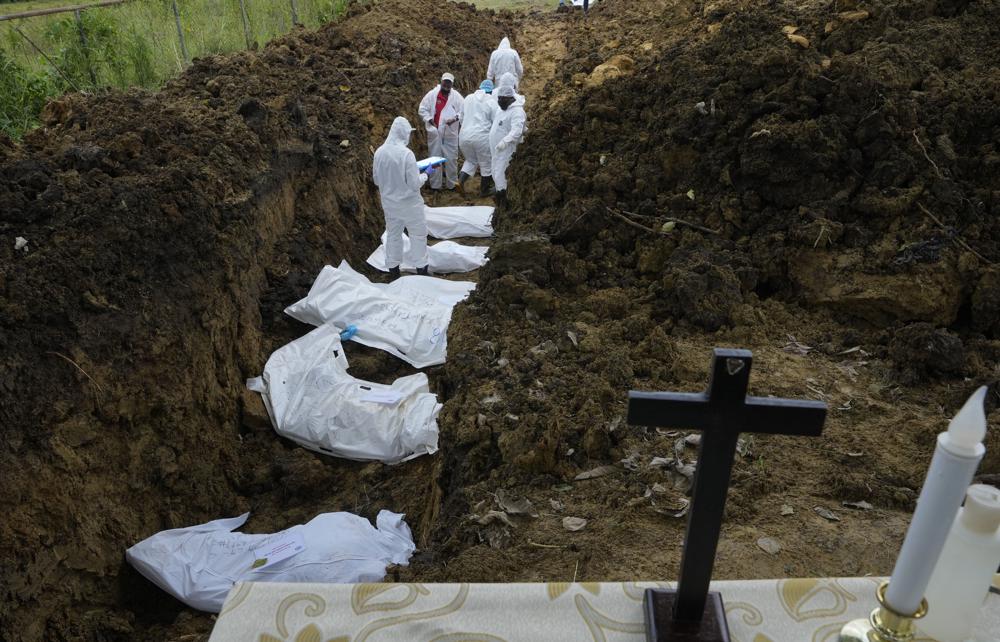RIO DE JANEIRO, BRAZIL – In an isolated cemetery in Panama’s Darien province, a group of migrants who lost their lives trying to cross the most treacherous stretch on their route to the United States were buried in a grave with a card containing what little data forensic investigators have gathered in case someone someday claims the bodies.
Officials in white protective suits buried 15 bodies – 12 adults, two skeletons, and a fetus – in the small cemetery of Guayabillo in Agua Fria. A priest with a crucifix, a candle, and two white flowers placed on a small table next to the grave performed a simple ceremony.
On the body bags were placed on a white plasticized sheet of paper indications such as “Unknown in Bajo Grande”, “Unknown from Rio Tuqueza”, “Unknown Infanta” and “Unknown Osamenta”.
Read also: Check out our coverage on Panama
“It’s the least that can be done, to bury them with dignity,” priest Nicolas Delgado Diamante, who has been in Darien for 25 years, told The Associated Press.

Migrants who manage to survive the crossing of the inhospitable Darien jungle have long testified to the presence of numerous corpses along a route where they encounter a stretch they call the “Mountain of Death,” with raging rivers – especially in the rainy season – insects and poisonous snakes.
However, little was known about what happens to the bodies of those migrants who die during a crossing of several days either from natural diseases, accidents, drowning, or other causes.
So far this year, at least 50 bodies have been recovered in Darien, according to reports from forensic and investigative authorities.
This figure is higher than in previous years when the number of bodies found averaged between 20 and 30 and reflects the most significant wave of irregular migration that has been recorded in Darien in just over a decade. According to authorities, more than 90,000 – mostly Haitians from South American nations such as Chile and Brazil – have made the crossing this year.
“That number is a minimal amount of human remains along the entire journey,” said Dr. Jose Vicente Pachar, director of Panama’s Institute of Legal Medicine and Forensic Sciences. “Many of them die naturally, for example, they have a heart attack, they fall, but nobody is going to give them attention. They stay there or are assaulted, or the water current comes and carries the corpses away.” Mosquito bites and poisonous snake bites are also common.
Pachar acknowledged that there is no way to do a thorough investigation into the findings, for which international support would be needed, “to go through the trails, the trails, because all the descriptions and testimonies (is) that there are human remains.”
The National Border Service agents often help rescue the bodies, even using helicopters to bring them out with personnel from the Darien prosecutor’s office. However, that is only the first challenge investigators face.
Many of the bodies often decompose due to the high humidity environment or are partially eaten by animals. Migrants who claim to have seen deceased persons along the way continue on their path and generally do not stay on Panamanian soil to assist in the subsequent identification process of the bodies.
The route through the Darien Gap – where the Pan-American highway is cut off – “is so complex that it is straightforward to find families that are divided along the route, including mothers who can no longer continue and who have to stay in the jungle because they have been hurt very badly (who) can no longer continue and give their children to other people they go with and who are not their relatives at times”, Katherine Fuentes, migration, protection and social inclusion coordinator of the International Federation of Red Cross and Red Crescent Societies (IFRC) for Central America, told the AP.

